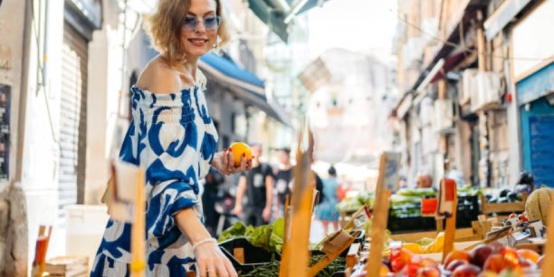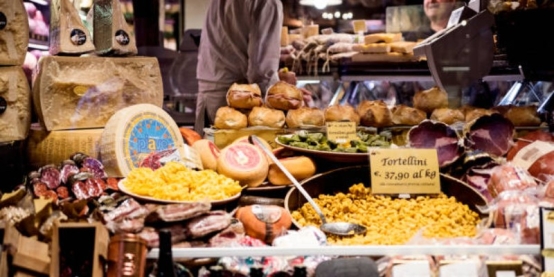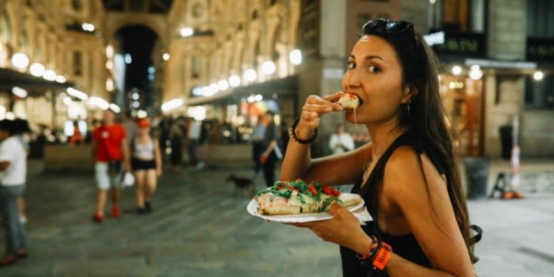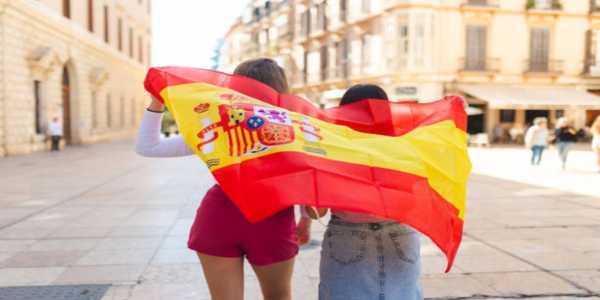The Ultimate Guide To Italy Food Tours For An Unforgettable Journey
Italy stands as a global beacon for culinary excellence, drawing millions with its rich traditions and diverse flavours. This guide explores Italian food tours in depth, offering insights into why these experiences captivate travellers worldwide.
From bustling markets to vineyard tastings, Italy food tours provide an immersive way to savour authentic Italian cuisine while uncovering cultural heritage. Whether planning a first trip or seeking more profound Italian food experiences, this comprehensive resource covers everything needed for an unforgettable journey through the best food cities in Italy.
Table of Contents
Why Italy Leads the World in Culinary Fame
A Breakdown of Italy Food Tours for Every Taste
Top Cities and Regions for Food Tours in Italy
Essential Foods and Drinks on Italy Food Tours
Selecting the Ideal Food Tour in Italy
Sample Itineraries for Italy Food Tours
Budgeting for Food Tours in Italy
Optimal Seasons for Italy Food Tours
Planning a Self-Guided Food Tour in Italy
Practical Tips for Food Tour Travellers
Top Operators for Italian Food Experiences
Embracing Italy Food Tours for Cultural Discovery
Why Italy Leads the World in Culinary Fame
Italy's culinary reputation is rooted in centuries of tradition, blending simple ingredients with bold flavours. Each region offers distinct specialities, from Tuscan olive oil to Sicilian seafood, creating a diverse food culture admired worldwide.

Italian cooking principles focus on freshness, seasonality, and balance. Rather than masking flavours, dishes highlight natural ingredients, turning everyday meals into memorable experiences.
Food in Italy is also deeply tied to family and community. Shared meals remain central to daily life, reinforcing bonds while passing down recipes across generations. Experts from organisations like Slow Food International emphasise how these tours preserve traditions amid globalisation.
Beyond taste, Italian cuisine represents cultural pride. UNESCO even recognises the Mediterranean diet, anchored in Italian food traditions, as part of humanity's heritage.
For travellers, this means more than just eating—it's stepping into living history. Every dish tells a story of geography, climate, and craftsmanship that shapes Italy's unique identity.
A Breakdown of Italy Food Tours for Every Taste
Italian food tours come in various forms, catering to different interests and paces. Walking tours focus on urban strolls through historic districts, sampling street foods and visiting artisan shops. City-specific tours delve into places like Rome or Venice, emphasising local staples.
Wine and cheese tours pair tastings with vineyard visits, exploring pairings like Chianti with pecorino. Cooking classes teach hands-on preparation of dishes such as risotto or tiramisu, often in family-run kitchens. Farm-to-table experiences connect diners directly to sources, like olive groves in Tuscany or dairy farms in Emilia-Romagna.
These tours usually last from two hours to full days, with group sizes ranging from intimate gatherings of four to larger parties of 20. Inclusions often cover tastings, guides, and sometimes transportation. Costs vary: budget options start at 50 euros per person, while luxury Italy food tours can exceed 200 euros, including exclusive access to private estates.
Food tours in Italy operate through structured itineraries, ensuring a mix of education and indulgence. Guides, often locals with culinary backgrounds, share insights on Italian cuisine's evolution. This format appeals to those seeking authentic Italian food experiences without the hassle of planning.
Top Cities and Regions for Food Tours in Italy
Italy's regions boast unique culinary identities, making them prime for food tours in Italy. Here are some of the top cities in Italy for memorable food tours:
1. Rome
Rome captivates with pasta alla carbonara, a creamy dish of eggs, cheese, and pancetta, alongside supplì—fried rice balls—and creamy gelato. Tours here often include visits to ancient markets like Campo de Fiori.
2. Florence and Tuscany
Florence and Tuscany shine with bistecca alla Fiorentina, a thick grilled steak, paired with robust Chianti wines and extra-virgin olive oil. Italy food tours in this area feature countryside drives to vineyards and olive presses, showcasing the farm-fresh ethos of Italian cuisine.
3. Bologna (Emilia-Romagna)
Bologna, in Emilia-Romagna, is renowned for tortellini stuffed with meat and cheese, mortadella sausage, aged balsamic vinegar, and Parmigiano-Reggiano cheese. Known as Italy's food capital, it offers immersive Italian food experiences through factory tours and tastings.
4. Naples and the Amalfi Coast
Naples and the Amalfi Coast deliver authentic pizza margherita, flaky sfogliatella pastries, and fresh seafood. Food tours in Italy here emphasise coastal flavours, with boat trips to sample limoncello-infused dishes.
5. Venice
Venice introduces cicchetti—small plates like marinated sardines, seafood risotto, and aperitivo spritz. Tours navigate canals and hidden bacari bars, revealing the lagoon's influence on Italian cuisine.
6. Sicily
Sicily stands out with arancini rice balls, sweet cannoli, abundant seafood, and Marsala wine. Italy food tours explore volcanic soils that enhance produce, blending Arab and Norman culinary legacies.
7. Puglia
Puglia features orecchiette pasta, creamy burrata cheese, and olive oil from ancient groves. This southern region's food tours in Italy highlight seaside markets and family recipes, rounding out the best food cities in Italy as a comprehensive map.
Essential Foods and Drinks on Italy Food Tours
Italy food tours introduce a spectrum of must-try dishes that define Italian cuisine. Signature items include risotto from the north, creamy with arborio rice and broth, and southern eggplant parmigiana, layered with tomato sauce and cheese.
Street food highlights feature panini with prosciutto, arancini from Sicily, and piadina flatbreads from Emilia-Romagna. These portable bites showcase regional ingenuity in Italian food experiences.

Traditional desserts tempt with tiramisu's coffee-soaked layers, panna cotta's silky pudding, and Sicily's cassata cake. Each reflects local ingredients, like mascarpone in the north or ricotta in the south.
Coffee culture thrives with espresso shots for quick energy and cappuccino for morning rituals, always paired with cornetto pastries. Food tours in Italy often include bar visits to observe this daily habit.
Wines like Chianti from Tuscany, bold Barolo from Piedmont, and bubbly Prosecco from Veneto elevate meals. Liqueurs such as Limoncello from the Amalfi Coast add citrusy finishes. These elements weave through Italian food tours, enriching the understanding of Italian cuisine.
Selecting the Ideal Food Tour in Italy
Choosing the right food tour in Italy requires evaluating guides' expertise—local operators often provide more authentic insights than large companies. Look for certifications from bodies like Italy's Ministry of Tourism, ensuring knowledgeable narration on Italian cuisine.
Group tours suit social travellers, while private options offer customisation for families or couples. Duration matters: short two-to-three-hour sessions fit busy schedules, full-day excursions delve deeper, and multi-day Italy food tours cover multiple regions.
Reviews on platforms like TripAdvisor reveal authenticity; seek mentions of fresh, seasonal ingredients in Italian food experiences. Accommodate dietary needs by confirming vegetarian, vegan, or gluten-free adaptations upfront.
Prioritise tours with small groups for personalised attention, enhancing the overall value in the best food cities in Italy.
Sample Itineraries for Italy Food Tours
A one-day food tour in Rome might start with espresso at a historic cafe, followed by market visits for supplì and carbonara tastings. Afternoon includes gelato workshops and ends with wine pairings, encapsulating Roman Italian cuisine.
In Florence, a similar day could feature olive oil sampling in the Tuscany hills, steak grilling demos, and Chianti vineyard tours. This highlights farm-to-table Italian food experiences.
For a three-day itinerary in Bologna, day one explores tortellini making and mortadella factories. Day two visits Parma for Parmigiano-Reggiano ageing rooms, and day three covers Modena's balsamic vinegar production. Food tours in Italy like this immerse you in Emilia-Romagna's bounty.
A seven-to-ten-day journey spans Rome's pastas, Tuscany's wines, Bologna's cheeses, Naples' pizzas, and Sicily's sweets. Daily themes build a narrative of Italian cuisine across the best food cities in Italy, with guided transports and expert insights.
Budgeting for Food Tours in Italy
Italy food tours range from 50 to 300 euros per person per day, depending on inclusions. Budget options cover basic tastings and walking guides, while premium ones include multi-course meals and private transport.
Inclusions typically encompass all sampled foods, non-alcoholic drinks, expert guidance, and sometimes entry fees. Luxury Italian food experiences might add helicopter transfers or exclusive chef sessions.
Hidden costs include tips for guides (10-15 per cent), extra drinks, and souvenirs such as olive oil bottles. To save, opt for off-peak bookings or bundle with accommodations.
Self-guided alternatives reduce expenses by using apps for maps to authentic spots in Italy's best food cities, balancing cost with immersive Italian cuisine discovery.
Optimal Seasons for Italy Food Tours
Spring brings fresh produce like asparagus and artichokes, ideal for market-focused food tours in Italy. Summer offers tomato-based dishes and coastal seafood, though heat may limit outdoor activities.
Autumn aligns with truffle season in Piedmont and wine harvests in Tuscany, enriching Italian food experiences with festivals like the Alba White Truffle Fair. Olive harvests in Puglia provide hands-on oil pressing.
Winter suits hearty meals like stews and cheeses, with fewer crowds in the best food cities in Italy. Events such as Verona's wine festivals add cultural layers.
Weather influences choices: mild springs favour walking tours, while rainy winters suit indoor cooking classes. Aligning with seasonal specialities ensures peak flavours in Italian cuisine.
Planning a Self-Guided Food Tour in Italy
Self-guided food tours in Italy start with mapping local markets like Rome's Testaccio or Florence's Mercato Centrale for fresh produce and street eats. Focus on trattorias for regional dishes, avoiding tourist-heavy spots.
Apps like Eatwith or The Fork help locate authentic eateries, rating them on Italian cuisine authenticity—researching signature items per region to curate tastings.
Dining etiquette includes ordering house wine, understanding service charges (coperto), and minimal tipping—usually rounding up. This approach fosters genuine Italian food experiences without structured groups.
Incorporate walks between venues in Italy's best food cities, blending exploration with meals for a flexible, cost-effective adventure.

Practical Tips for Food Tour Travellers
Avoid tourist traps by seeking eateries off main squares, where locals dine for authentic Italian cuisine. Verify menus for seasonal items, signalling quality.
Health considerations include disclosing allergies early; tap water is safe in most areas, but bottled water is common. Street food from reputable vendors minimises risks.
Pack comfortable shoes for walking tours and a reusable bottle for sustainability. Basic phrases like "un tavolo per due" (table for two) or "senza glutine" (gluten-free) ease ordering.
These tips enhance safety and enjoyment on food tours in Italy, ensuring memorable Italian food experiences.
Top Operators for Italian Food Experiences
Walks of Italy
Trusted operators like Walks of Italy are well-regarded for small-group tours guided by local experts. Their itineraries highlight not only famous dishes but also hidden culinary gems, offering travellers an in-depth appreciation of Italian cuisine.
Vegan Tours Italy
Niche providers such as Vegan Tours Italy cater to specialised tastes, ensuring plant-based travellers can enjoy authentic regional meals. These tours spotlight creative adaptations of traditional dishes while preserving local flavour and culture.
Cooking Classes in Tuscany
Hands-on learning comes alive through companies like Cooking Classes in Tuscany, where participants prepare dishes such as handmade pasta or tiramisu in rustic kitchens. This immersive approach blends cooking with cultural storytelling.
Local operators
Local operators, often family-run, bring unmatched authenticity. They know the traditions, markets, and producers personally, offering insights that larger international companies may overlook. Travellers benefit from genuine connections to communities.
When selecting a tour, comparing reviews is key. Focus on feedback that highlights sustainability, authenticity, and quality experiences across the best food cities in Italy. This ensures your culinary adventure feels both memorable and meaningful.
Embracing Italy Food Tours for Cultural Discovery
Italy food tours serve as profound avenues to explore the nation's soul through its flavours. They bridge history, community, and innovation in Italian cuisine, leaving participants with lasting memories. Engaging in these journeys, whether guided or self-directed, unlocks the essence of food tours in Italy, inviting a deeper appreciation of the best food cities in Italy and their Italian food experiences.
Sources
Was this helpful? Share your thoughts
- Learned practical methods
- Solved my questions
- Inspired new ideas
-
![How Online Hotel Booking Software Can Save You Time And Money]() How Online Hotel Booking Software Can Save You Time And Money
How Online Hotel Booking Software Can Save You Time And Money -
Planning a trip should feel exciting. You think about new places, new food, and fun adventures. But let’s be honest, it can also feel stressful. Why? Because there’s so much to do: finding flights, packing, and most of all, booking a hotel.
Explore More
-
![Spooky & Fun: 26 Best Halloween Travel Destinations You Can’t Miss]() Spooky & Fun: 26 Best Halloween Travel Destinations You Can’t Miss
Spooky & Fun: 26 Best Halloween Travel Destinations You Can’t Miss -
Bored of the same trick-or-treating streets? Halloween travel destinations are calling, offering eerie towns, haunted trails, and spine-chilling theme park thrills. Step beyond routine and dive into a season where every destination promises a new kind of fright and wonder.
Explore More




